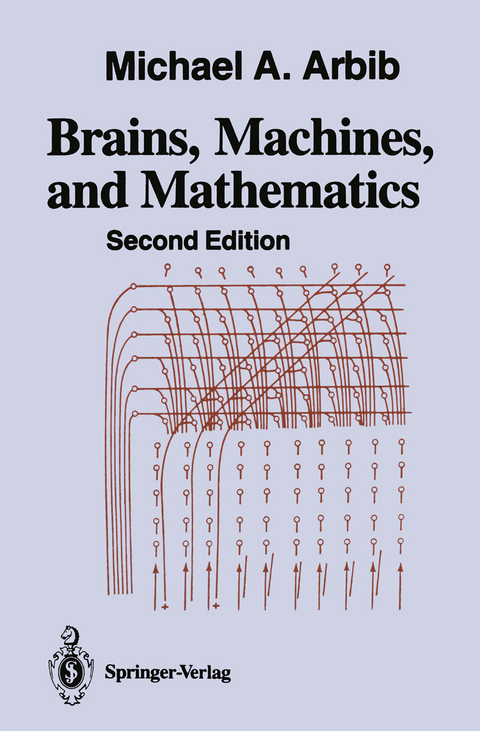
Brains, Machines, and Mathematics
Springer-Verlag New York Inc.
978-1-4612-9153-4 (ISBN)
1 A Historical Perspective.- 1.1 The Road to 1943.- 1.2 Cybernetics Defined and Dissolved.- 1.3 The New Rapprochement.- 2 Neural Nets and Finite Automata.- 2.1 Logical Models of Neural Networks.- 2.2 States, Automata, and Neural Nets.- 3 Feedback and Realization.- 3.1 The Cybernetics of Feedback.- 3.2 From External to Internal Descriptions.- 4 Pattern Recognition Networks.- 4.1 Universals and Feature Detectors.- 4.2 The Perceptron.- 4.3 Learning without a Teacher.- 4.4 Network Complexity.- 5 Learning Networks.- 5.1 Connectionism.- 5.2 Synaptic Matrices.- 5.3 Hopfleld Nets and Boltzmann Machines.- 5.4 Reinforcement Learning and Back-Propagation.- 6 Turing Machines and Effective Computations.- 6.1 Manipulating Strings of Symbols.- 6.2 Turing Machines Introduced.- 6.3 Recursive and Recursively Enumerable Sets.- 7 Automata that Construct as well as Compute.- 7.1 Self-Reproducing Automata.- 7.2 Tesselations and the Garden of Eden.- 7.3 Toward Biological Models.- 8 Gödel’s Incompleteness Theorem.- 8.1 The Foundations of Mathematics.- 8.2 Incompleteness and Its Incremental Removal.- 8.3 Predicate Logic and Godei’s Completeness Theorem.- 8.4 Speed-Up and Incompleteness.- 8.5 The Brain - Machine Controversy.- Appendix Basic Notions of Set Theory.
| Zusatzinfo | XVI, 202 p. |
|---|---|
| Verlagsort | New York, NY |
| Sprache | englisch |
| Maße | 155 x 235 mm |
| Themenwelt | Schulbuch / Wörterbuch ► Lexikon / Chroniken |
| Mathematik / Informatik ► Informatik ► Netzwerke | |
| Informatik ► Theorie / Studium ► Künstliche Intelligenz / Robotik | |
| Mathematik / Informatik ► Mathematik ► Analysis | |
| Mathematik / Informatik ► Mathematik ► Arithmetik / Zahlentheorie | |
| ISBN-10 | 1-4612-9153-4 / 1461291534 |
| ISBN-13 | 978-1-4612-9153-4 / 9781461291534 |
| Zustand | Neuware |
| Haben Sie eine Frage zum Produkt? |
aus dem Bereich


